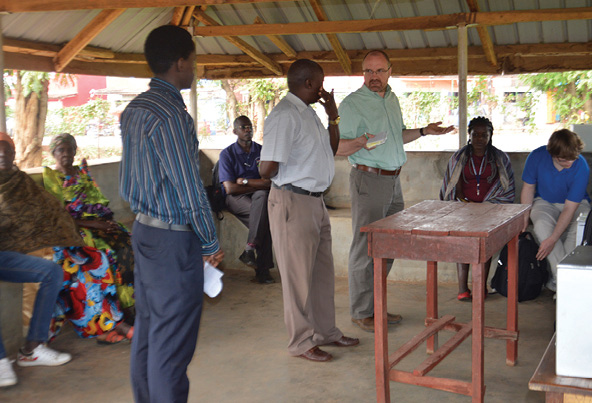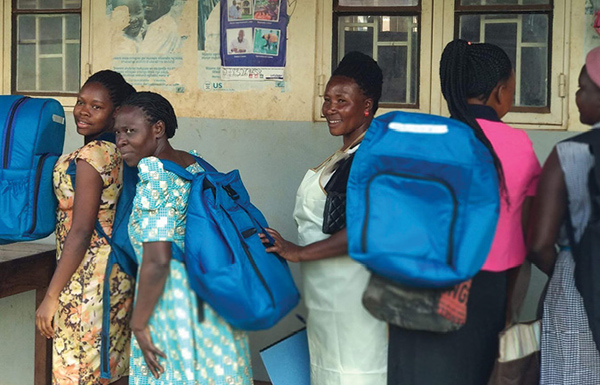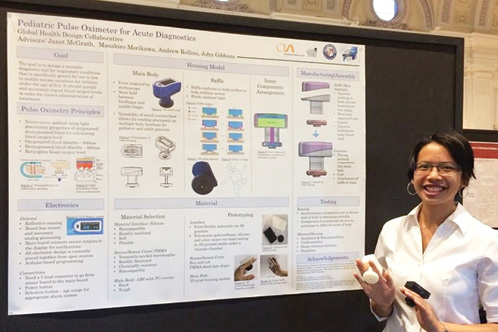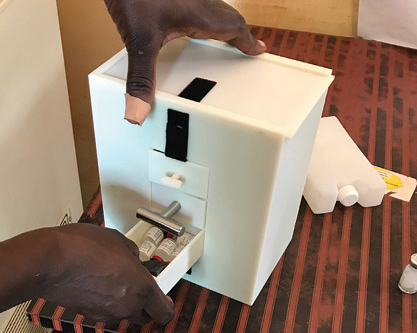
The Global Health Design Collaborative evolved from an initiative between social scientists and engineers working on global health projects in Uganda. Image courtesy of CWRU/GHDC.
Latest News
May 17, 2021
The Global Health Design Collaborative (GHDC) evolved from an initiative between social scientists and engineers working together on global health projects in Uganda. The goal is to combine medical anthropology expertise through working in local communities with the design expertise of engineers in developing solutions for global health problems.
Andrew Rollins is a professor of biomedical engineering at Case Western Reserve University (CWRU) in Cleveland, OH. We spoke to Rollins to learn more about the program.
Digital Engineering: Can you provide an overview of the Global Design Collaborative?
Professor Andrew Rollins: Our goal is to blend the expertise of medical anthropology in working in local communities with the design expertise of engineers in developing solutions to global health problems. The initiative is specifically working in Uganda, where Case Western Reserve has a 32-year collaboration in health research. This project is a unique blending of social science and engineering, which provides students—at CWRU and at Makerere University in Uganda—the opportunity to work together in interdisciplinary teams to address real-world problems.

GHDC’s founders came together in 2014 to work on two health projects in collaboration with engineering students in Uganda. To date, eight cohorts of students have traveled with us to Uganda to visit rural health centers with the Ugandan students and get critical input from stakeholders on solutions in progress. The GHDC has grown and expanded its membership base and is now a large ongoing student design club.
The program benefits Case Western Reserve engineering students by providing real-world design opportunities in a team setting with healthcare, engineering and anthropology mentors in the U.S. and in Uganda.
As a broader impact, this program provides collaborative team design experience to other (non-engineering) CWRU students as well as engineering students at Makerere University in Uganda (MAK), as well as building capacity in the emerging biomedical engineering (BME) program at MAK. Last year a graduate of the MAK BME undergraduate program who is doing her graduate work in BME here at CWRU joined the team to provide additional mentoring and further the collaboration with MAK.
The group has continued its substantial momentum over the last year, even under the difficult circumstances of the COVID-19 shutdown and the cancellation of travel. There are currently six active design teams, and student engagement has remained high, despite current restrictions, with many new students joining the teams.
DE: Can you tell us about some of the designs that are part of the event and how they came to be?
Rollins: Active design projects include:
A handheld pediatric pulse oximeter. This project was initiated at the request of the previous head of the global health residency program at University Hospitals. He had experienced the need for such a device to help diagnose and treat babies with pneumonia in low-resource clinics around the world.
Two teams are working on devices to aid health outreach workers in rural Uganda, who travel to rural villages to provide healthcare and vaccinate children. These teams are working on an improved vaccine carrier and a specialized backpack to help workers manage their gear. These needs were identified in the Luweero District in Uganda, where the club conducts fieldwork in collaboration with MAK.

Single-use injectable depot medroxyprogesterone acetate (or DMPA) is a contraception option for women in Uganda. One concern identified by local partners is safe disposal of the device after use. This GHDC team is investigating the environmental effects of in-home use as well as envisioning safe disposal methods. This project was identified by the Uganda Country Office of PATH, with whom GHDC consults.
Another team is designing a small incinerator specifically for disposable sharps boxes. These safety boxes are commonly used in small clinics and by outreach workers, but small clinics rarely have access to incinerators for appropriate hazardous medical waste disposal, where needles constitute a significant portion.
The GHDC design teams have developed numerous prototypes for field testing and design iteration. The photographs show examples of prototype backpacks, vaccine carriers and pulse oximeters. Teams regularly participate in student design competitions, and win or place in several cases.

Teams are aware that designs only make a real-world impact if a product reaches the users. They, together with their MAK collaborators, are investigating pathways to product development.
DE: Anything else you’d like to tell us about the event that the above questions haven’t given you the opportunity to express?
Rollins: The Case Alumni Association (CAA) has been the major sponsor of GHDC activities. Institutional support has also come from the Case School of Engineering, the Department of Biomedical Engineering, the Center for International Affairs and the Social Justice Institute.
Subscribe to our FREE magazine, FREE email newsletters or both!
Latest News
About the Author
Jim Romeo is a freelance writer based in Chesapeake, VA. Send e-mail about this article to [email protected].
Follow DE





